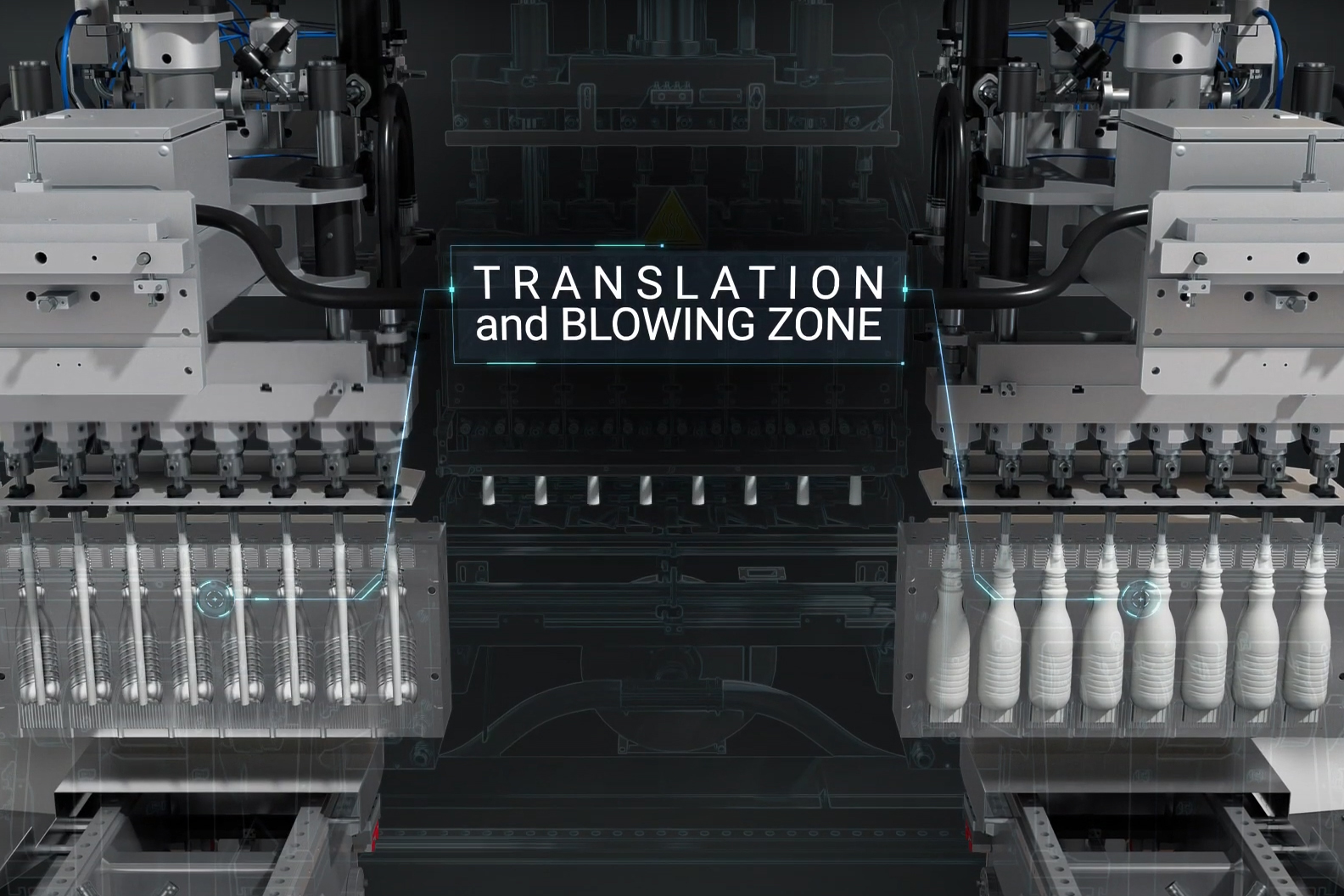What is Blow Moulding?
Blow Moulding (or blow molding) is a manufacturing process for forming and joining hollow thermoplastic parts. It is called blow moulding because it typically involves blowing air into the center of a hollow tube of melted plastic known as a preform or parison, and putting it in a mold cavity. The result is a blown hollow object playing the role of a packaging.
The most common types of plastic blow moulding are: extrusion blow molding, injection blow molding and stretch blow moulding.
The blow moulding process begins with melting down the plastic and forming it into a parison, in the case of extrusion blow molding (EBM), or a preform, in the case of injection blow molding (IBM) and stretch blow moulding (SBM).
Injection and stretch blow molding are often used to create cosmetic containers, water bottles or various small hollow parts. While extrusion blow molding is typically used to create from medium to large packaging with complex shape or highly technical requirements.
Read more in order to deepen the main differences of above mentioned technologies and discover the key benefits of the extrusion blow molding process.
How do the EBM, IBM, and SBM processes work?
The differences between EBM, IBM, SBM regarding the main plastic materials used are the following:
- HDPE, HMWPE, LDPE, PP, PVC, PETG, E-PET for the EBM process;
- HDPE, PP for IBM process;
- PET for SBM process.
In particular, the main differences between the 3 technologies are as follows.
Extrusion Blow Molding
The EBM process consists in molding plastic containers in which plastic granules are melted and extruded in a hollow tube (parison). Subsequently the parison enters in a cooled metal mold, air is blown inside it and, at this stage, the parison takes the shape of the designed bottle through mold cavity.
Which are the main advantages of Extrusion Blow Moulding?
- Fast production rates;
- Ability to mold complex parts;
- Ability to adjust bottle weight;
- Handles can be incorporated in the design;
- Ideal for multiple layers or COEX packaging;
- Ideal for window stripes on the packaging wall.

Injection Blow Molding
As the name suggests, this type of molding involves the injection of plastic into a mold and onto a core rod.
At the first station, the molten polymer is injected under high pressure through the cavity gate into the injection mold. The cavity mold forms the external shape and it is clamped around a core rod, which instead forms the internal shape of the preform. The preform consists of a threaded neck with a thick tube of polymer attached, which will form the body of the bottle. The core rod then rotates into blow molding station and the preform is placed into the mold to be inflated and cooled down.
Injection blow moulding is a viable process for very small container up to 250ml such as medical devices or cosmetic packaging.
Stretch Blow Moulding
The SBM is a variant of standard injection blow molding which involves the stretching process of the preform. The heated material is literally stretched and then inflated so that it creates a hollow interior.
The stretch rod extends the preform and right after compressed air is quickly blown into the preform. In this way, the air pushes the preform out to the blow mold walls where it cools down and becomes hardens. It is possible to mold high-precision shaped containers or containers with very thin walls.
The stretch blow molding is the most common and well-known process for manufacturing plastic water bottles.

Our EBM technology
Extrusion Blow Molding (EBM) technology is particularly suitable for food, cosmetics, detergents, lubricants and pharmaceutical containers.
Among extrusion blow moulding machine manufactures, Techne has always stood out for one reason in particular: Techne’s blow molding machines remain fully operational for over 20 years. Each installed system has in fact a very long service life. The structure and components are all subjected to thorough quality testing and control to ensure that each unit is produced to the highest possible standards.
Techne's pool of machines ranges from small to large blow molding machines with high production capacity. Bottle sizes range from 60ml to 7L for small plastic extrusion machines and from 60ml to 30L for larger ones.
Learn more about our machine models and download the datasheet of the most suitable blow molding machine for your business.













Leave a comment